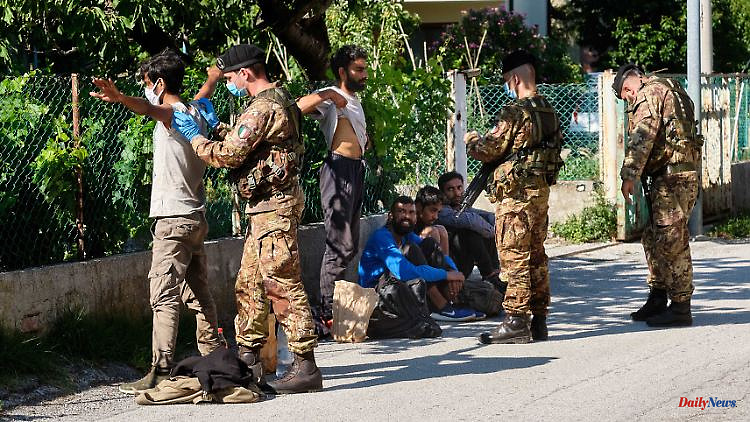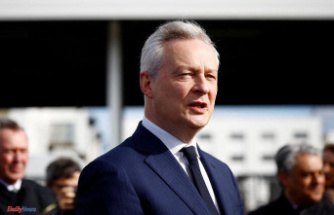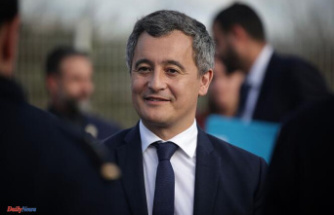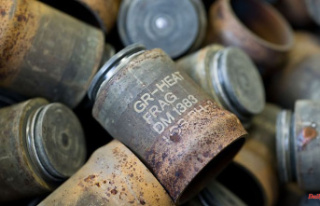Until a year ago, the Italian city of Trieste was a model for receiving migrants: quick asylum applications, reallocation to apartments. It's over. Today, refugees sleep in the company of rats.
It's 8.30 in the morning, Abdullah looks sleepily out of a mountain of blankets. She tells. There are nine in total, but "I was freezing cold," he says. No wonder, the temperature at night was below zero and his bunk is not in a dormitory, but in the neglected silos of the old port of Trieste. Abdullah is in his mid-twenties, comes from Pakistan and is not the only one who found shelter here during the night.
In the halls you can see makeshift beds made of cardboard boxes and blankets in which refugees sleep. It's like thirty down here. If you go further up the stairs through a loophole, you will find other men who have spent the night here. Garbage is everywhere, and a young Afghan man peeping out from under a cloth and cardboard curtain replies when asked how he spent the night: "In the company of rats."
Gianfranco Schiavone is chairman of the aid organization Consorzio Italiano di Solidarietà (ICS), the "Italian Association of Solidarity". He estimates that around 130 migrants in the city currently have no real roof over their heads. "This is a completely new situation for Trieste," he says ntv.de. "Until July 2022, there was no such thing." On the contrary, Trieste was considered a model. Actually, that's still the case.
"We have two reception centers," Schiavone continues. "Casa Malala, a former barracks on the border with Slovenia, and Campo Sacro, a youth hostel formerly used by the Boy Scouts." The refugees used to stay two or three days in both facilities until the asylum application formalities were completed. After that they were either recorded in Trieste or, if there was no space, distributed elsewhere in Italy. Now they wait months.
The city is considered a model because the refugees who are allowed to stay are accommodated in decentralized apartments instead of in large reception centers. "Only that enables real integration," says Schiavone. The apartments are managed by the aid organization, there are 160 in total. They are rented on the housing market. "It sounds strange," says Schiavone, "but many owners don't care who lives in it, the main thing is that the rent is paid on time. And that's what we do." On average, five people live in an apartment. A total of around 1000 asylum seekers are housed in this way.
In the past year, however, the distribution system stumbled. Many more refugees came to the city via the Balkan route. The report is currently being compiled, but it is estimated that the number of asylum applications in 2022 was just under 10,000, compared to 6,000 the year before. This would have required faster processing of the applications in order to maintain the rotation system of two to three days. However, the city did nothing. "And Caritas, which manages the reception centers, hasn't protested," adds Schiavone. At the moment, around 260 asylum seekers are waiting for the decision.
But while they at least have a roof over their heads, there are those like Abdullah, Murat and Hussein who somehow have to make ends meet until a place becomes available for them. And new ones are added every day.
All you have to do is go to the square in front of the central station, Piazza della Libertà. The number 40 bus stops there, from which groups of often completely exhausted people, mostly Pakistanis, Afghans, Iranians and Iraqis, get off early in the morning. The bus goes up to the towns of Bagnoli della Rosandra and San Dorligo della Valle. From there the hiking trails through the karst area begin. For the refugees, these are the end stations of a tedious, and in many places dangerous, day-long hike. Just a few hundred yards along these trails, you'll come across their footprints: fire pits, empty food cans, tattered shoes and backpacks.
The refugees call the march "The Game". Some manage to cross the border the first time, others have to try several times. Umar is in his mid-20s and comes from Pakistan. He was "taken back" twice by the Croatian police. That is to say, he was handed over to the Croatian colleagues by the Italian officials without a deportation order, which is against the law. Umar tells that he was beaten and tortured. He lifts his trouser legs and points to burn scars on his legs. Sanjay is 30 years old, comes from Afghanistan. He ended up in Hungary via Romania. "People reported us and the police beat us," he says. He hopes to finally have arrived, to learn the language and to find a job. He studied IT at home, he adds.
Smugglers demand up to 10,000 euros to bring the migrants from Turkey to the EU. To raise money, families sell land and borrow money from relatives. Nevertheless, most refugees see these "passeurs" - the smugglers - as something like guardian angels.
When you arrive in Trieste, the first point of contact is the day center run by the aid organizations San Martino al Campo and ICS, on a street near the train station, Via Udine. "Here, those who do not yet have a place in the reception centers or who have just arrived can shower, get clean underwear, food and, if necessary, medical attention," explains Maddalena Avon from ICS. "Many of those who get there are just passing through, they want to continue towards France or Northern Europe."
5.30 p.m., an elderly couple comes loaded with bags to the Piazza della Libertà. Lorena Fornasir is over 60, her husband Gian Andrea Franchi is 86 years old. In 2018, they founded the aid organization "Linea d'Ombra" to help refugees stranded in Trieste. You bring clean and warm clothes with you. Lorena Fornasir also treats small wounds. Especially battered feet.
"You can't even imagine the condition some people are in," she says while treating a Pakistani man. "We're doing what the city should actually be doing," adds her husband. Luciano Prandin shares this opinion. He, too, is of advanced age, but still comes twice a week, bringing hot tea and cake. "You have to do something," he says.
Some refugees stop only briefly in Trieste. They often take the 4:30 a.m. train to Milan the very next day - checks are rather rare at this time - and from there continue on to Ventimiglia, on the Italian-French border. Then "The Game" begins again. Again they go through forests, steep mountain paths, again they are afraid of being caught by the border police - this time the French.












